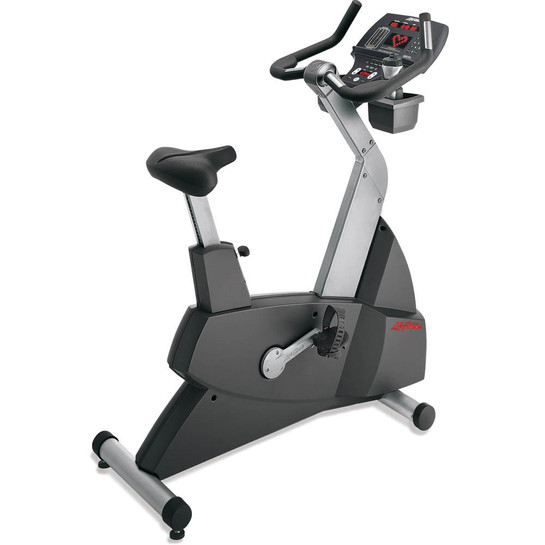My Upright Bike Resistance Does Not Work: How to Diagnose and Fix the Issue
Exercise bikes are a popular and effective option for at-home workouts, providing a low-impact yet high-intensity workout that can help improve cardiovascular fitness, burn calories, and strengthen muscles. However, like any piece of fitness equipment, exercise bikes can encounter issues, one of which is the resistance not functioning properly. In this comprehensive guide, we will explore the possible reasons why your upright bike resistance does not work, and provide solutions to help you fix the problem.
Table of Contents
Introduction to Resistance on an Exercise Bike
Different Types of Resistance Mechanisms
Understanding the Importance of Resistance in Your Workout
Common Causes of Resistance Issues
How to Troubleshoot Resistance Problems
Step-by-Step Guide to Fixing Resistance Issues Maintenance
Tips for Preventing Resistance Issues
When to Seek Professional Help
The Role of Warranty and Manufacturer Support
Conclusion
1. Introduction to Resistance on an Exercise Bike Resistance is the force against which you must pedal in order to propel the bike forward. It simulates the friction and incline encountered when cycling outdoors, and can be adjusted to provide an easier or more challenging workout. The level of resistance you choose depends on your fitness goals and preferences. By understanding the basics of resistance on an exercise bike, you can make informed decisions about your workout routine and better identify potential issues with your bike.
2. Different Types of Resistance Mechanisms Exercise bikes employ various mechanisms to create resistance, each with its own unique characteristics and benefits. The three main types of resistance systems are: Direct-contact resistance: This system uses brake pads that press against the flywheel to create friction, which in turn generates resistance. The brake pads can be adjusted to increase or decrease the resistance level. Magnetic resistance: In this system, magnets are used to create resistance by generating a magnetic field around the flywheel. The resistance can be adjusted by changing the proximity of the magnets to the flywheel. Fan-based resistance: This type of resistance is generated by a large fan connected to the pedals via a belt or chain drive. As you pedal faster, the fan spins faster, creating increased resistance due to air resistance.
3. Understanding the Importance of Resistance in Your Workout Resistance plays a crucial role in both the effectiveness and enjoyment of your exercise bike workouts. By adjusting the resistance level, you can: Simulate different outdoor cycling conditions, such as flat roads, hills, or headwinds Control the intensity of your workout, allowing for both low-impact and high-intensity sessions Target different muscle groups, helping to build strength and endurance Burn more calories and achieve better overall fitness results
4. Common Causes of Resistance Issues If you find that your upright bike resistance does not work, there could be several reasons behind the issue. Some common causes of resistance problems include: Slipping or worn belt Faulty display panel or batteries Jammed sensor unit Poor maintenance or lack of lubrication Damaged hub or resistance motor
5. How to Troubleshoot Resistance Problems Before attempting any repairs, it's important to identify the root cause of the resistance issue. To do this, follow these troubleshooting steps: Check for any visible damage or wear on the belt, flywheel, and other bike components Test the display panel and batteries for proper functioning Inspect the sensor unit for jams or obstructions Assess the overall maintenance and lubrication of the bike Examine the hub and resistance motor for damage or wear
6. Step-by-Step Guide to Fixing Resistance Issues Once you have identified the cause of the resistance problem, you can proceed with the appropriate repair steps. Here's a step-by-step guide to fixing common resistance issues:
6.1 Fixing a Slipping or Worn Belt Unplug the bike from any power sources Remove the pedals using a wrench or crank arm Remove the side shield by unscrewing the attached screws Inspect the belt for wear or damage, and replace if necessary If the belt is simply loose, adjust the tension using the appropriate nuts or brackets Reassemble the bike and test the resistance
6.2 Addressing a Faulty Display Panel or Batteries Unplug the bike from any power sources Inspect the display panel leads for any burns or damage If the leads appear intact, remove the battery pack cover using a screwdriver Replace the batteries with new ones, if necessary Reassemble the bike and test the resistance
6.3 Fixing a Jammed Sensor Unit Locate the speed sensor on your bike Use a hex wrench to remove the sensor Inspect the sensor for any jams or obstructions, and clear them if necessary Reinstall the sensor and reassemble the bike Test the resistance to ensure proper functioning
6.4 Improving Maintenance and Lubrication Clean the bike thoroughly, paying special attention to the gears, flywheel, and belt Apply a suitable lubricant to all moving parts, following the manufacturer's instructions Regularly inspect and maintain the bike to prevent future resistance issues
6.5 Repairing a Damaged Hub or Resistance Motor Remove the resistance system and hub bolt using a wrench Inspect the hub for wear or damage, and replace if necessary Reassemble the bike and test the resistance
7. Maintenance Tips for Preventing Resistance Issues To avoid future resistance problems, follow these maintenance tips: Regularly clean and lubricate all moving parts of your exercise bike Inspect the bike for wear or damage, and address any issues promptly Follow the manufacturer's maintenance guidelines and recommendations Store the bike in a dry, cool, and well-ventilated area to prevent rust and corrosion
8. When to Seek Professional Help While many resistance issues can be fixed at home, there are times when it's best to seek professional assistance. If you are unsure about the cause of the problem, if the issue persists despite your attempts to fix it, or if you are concerned about voiding your warranty by performing repairs yourself, consider consulting a professional technician or contacting the bike manufacturer for support.
9. The Role of Warranty and Manufacturer Support If your exercise bike is still under warranty, it's essential to understand the terms and conditions of the warranty before attempting any repairs. Some warranties may cover resistance issues, while others may be voided if you perform repairs yourself. Always consult your warranty documentation or contact the manufacturer for clarification before proceeding with any fixes.
10. Conclusion While encountering resistance issues with your exercise bike can be frustrating, understanding the potential causes and knowing how to fix them can save you time and money. By following the troubleshooting and repair steps outlined in this guide, maintaining your bike regularly, and seeking professional help when necessary, you can ensure that your upright bike resistance works as it should, allowing you to enjoy effective and rewarding workouts for years to come.


